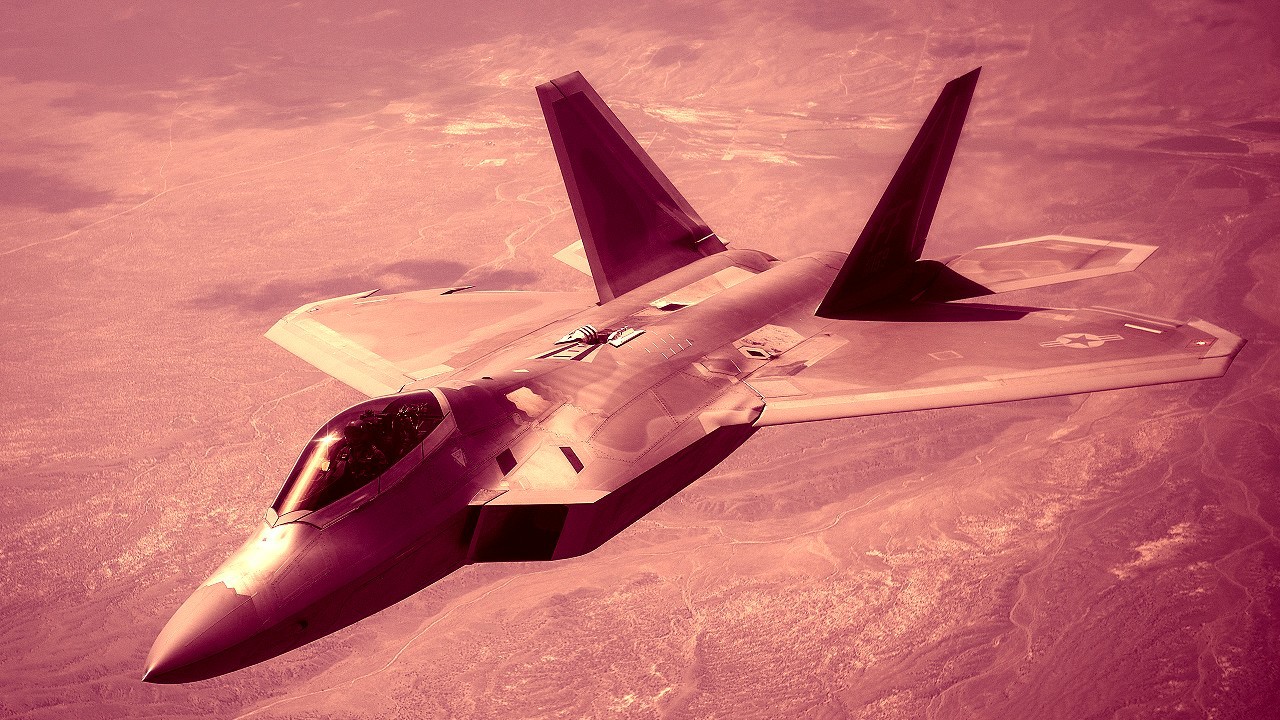When then-Secretary of Defence (SECDEF) Robert Gates decided to abruptly kill the F-22 Raptor program in 2009 – after less than half of the required number of 381 were built – many experts in the aviation and defense communities were understandably miffed.
Perhaps the most damning condemnation of Bob Gates’s decision came from the late great Robert F. Dorr, arguably the most prolific military aviation author since Martin Caidin (and a Facebook Friend of mine who unfortunately passed away before I ever got to meet him in person), in his 2015 book bluntly titled Air Power Abandoned: Robert Gates, the F-22 Raptor and the Betrayal of America’s Air Force.
As to why Secretary Gates made such a drastic decision, retired U.S. Air Force Chief of Staff General Norton Schwartz stated in his 2018 memoir that it was motivated by the desire to make room within the USAF budget for a new Stealth bomber, i.e. the next-generation bomber program AKA the B-21.
Smoke-filled – more likely figuratively than literally in this militantly antismoking day and age – political backroom debates and speculation aside, let’s take a look at what makes the F-22 such a desirable and special platform and thus justifies the anger of its proponents over its shortchanging.
“Where it began, I can’t begin to knowin’…”
The Lockheed Martin F-22 Raptor traces its roots to the USAF’s Advanced Tactical Fighter (ATF, most definitely not to be confused with the Bureau of Alcohol, Tobacco, and Firearms and Explosives) demonstration and validation program that ran from June 1981 to August 1991.
The program received its impetus from studies carried out in the late 1970s and early 1980s when intelligence revealed the Soviets’ early flight testing of the MiG-29 Fulcrum and Sukhoi Su-27 Flanker.
Lockheed’s entry, then known as the YF-22, beat out the competition from Northrup/McDonnell Douglas’s entry into the ATF sweepstakes, the YF-23A Black Widow II.
In spite of the latter design’s endorsement by no less an iconic figure than Chuck Yeager, the man who broke the sound barrier (try as I may, I have been unable to find any of the late great General Yeager’s TV adverts for the YF-23).
In the process, the F-22 officially became the first 5th Generation fighter aircraft.
What Makes the Raptor so Ravishing?
But despite its relative age, the Raptor is still widely regarded as the most dominant fighter in the world; Lt. Gen. Frank G. Klotz, “The F-22 Raptor’s unique combination of stealth, speed, agility, precision and situational awareness combined with air-to-air and air-to-ground combat capabilities make it the best overall fighter in the world.”
Quoth the famed Italian airpower theorist Gen. Giulio Douhet, “Flexibility is the key to airpower,” or my own Flight Training Officer (FTO) at USAF Officer Training School (OTS) used to say, “Semper Gumby (Always Flexible),” and the Raptor certainly embodies those mantras: although primarily designed as an air superiority fighter, the F-22 also offers ground attack, electronic warfare, and signals intelligence capabilities.
Powered by two Pratt & Whitney turbofan engines and capable of reaching speeds of Mach 2 (1,534 mph/2,469 kph), this warbird has a ceiling of 50,000 feet (15 kilometers) and a range of 1,841 miles (2,962 km) without refueling.
So then, how does the F-22 stack up against the later entries into the fifth-generation stealth fighter game, namely the ChiComs’ Chengdu J-20, Russia’s Sukhoi Su-57 Felon (what an apropos codename in light of Vladimir Putin’s latest shenanigans), and our own F-35 Lightning !!?
Alex Hollings of Sandboxx News racks & stacks his ranking from “worst to first” as follows: (4) the Felon; (3) the J-20; (2) the Lightning II; and (1) saving the best for last, the Raptor.
Among Mr. Hollings’s key points: “its incredible combination of low observability and high performance not only set the standard for all stealth fighters to come, but it also remains the most capable stealth fighter in service anywhere on the planet to this very day.
The Raptor is said to carry a frontal RCS of just 0.0001~0.0002 square meters, which is (as we’ve already mentioned) some 5,000 times smaller than expert assessments of the Russian Su-57, at least 800 times smaller than the J-20, and even 5-10 times smaller than the much newer F-35,” (original emphasis) and moreover “the Raptor can cover more distance at greater speeds than its competition while still having enough fuel left in the tank for a fight once it arrives.”
Too damn bad Alex Hollings wasn’t in a position back in 2009 to talk some sense into Bob Gates.
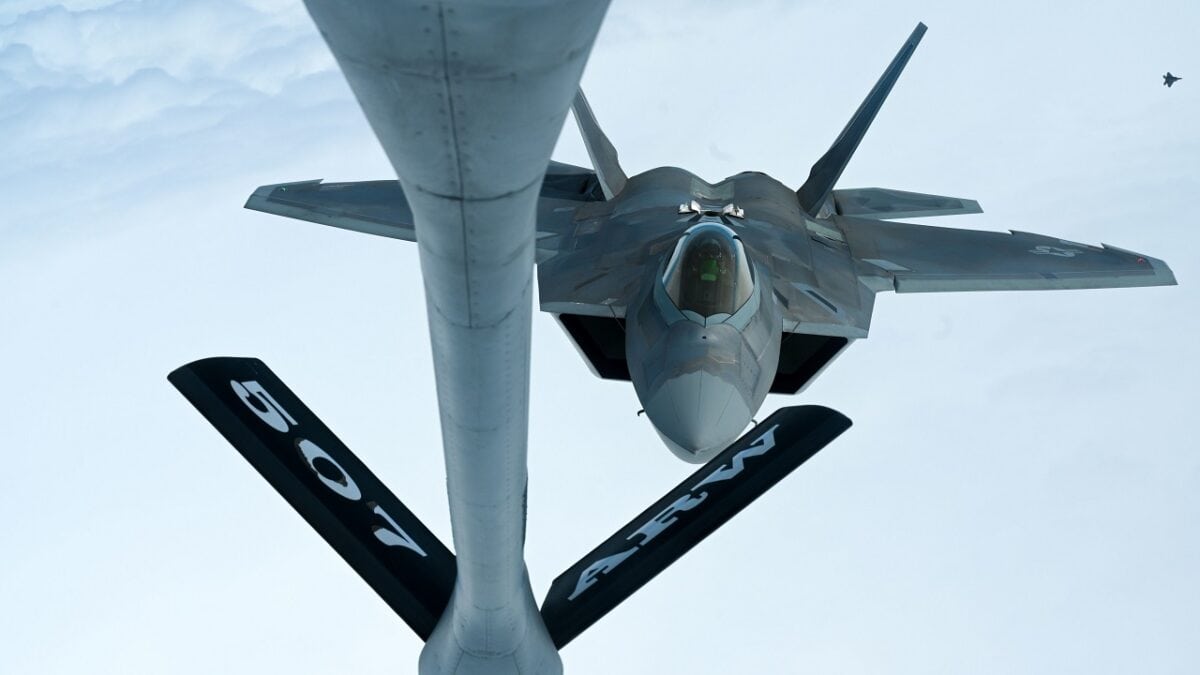
Eight F-22 Raptors with the 325th Fighter Wing at Tyndall Air Force Base, Florida, receive fuel from a KC-135 Stratotanker from the 507th Air Refueling Wing from Tinker Air Force Base, Oklahoma, Feb. 7, 2022, while the Okies flew to the U.S. Virgin Islands for training. (U.S. Air Force photo by Lauren Kelly)
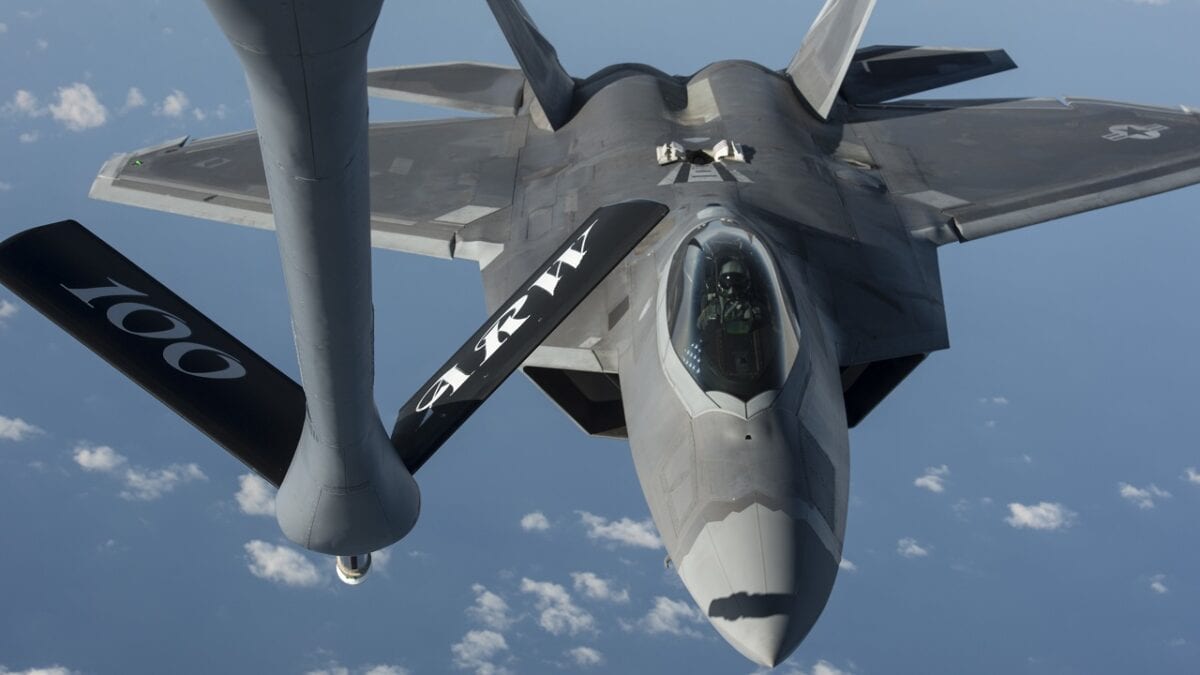
A U.S. Air Force F-22 Raptor from the 95th Fighter Squadron, Tyndall Air Force Base, Fla., moves into position behind a KC-135 Stratotanker from the 100th Air Refueling Wing, RAF Mildenhall Air Base, England, to conduct aerial refueling Sept. 4, 2015, over the Baltic Sea. The U.S. Air Force has deployed four F-22 Raptors, one C-17 Globemaster III, approximately 60 Airmen and associated equipment to Spangdahlem Air Base, Germany. While these aircraft and Airmen are in Europe, they will conduct air training with other Europe-based aircraft. (U.S. Air Force photo by Tech. Sgt. Jason Robertson/Released)
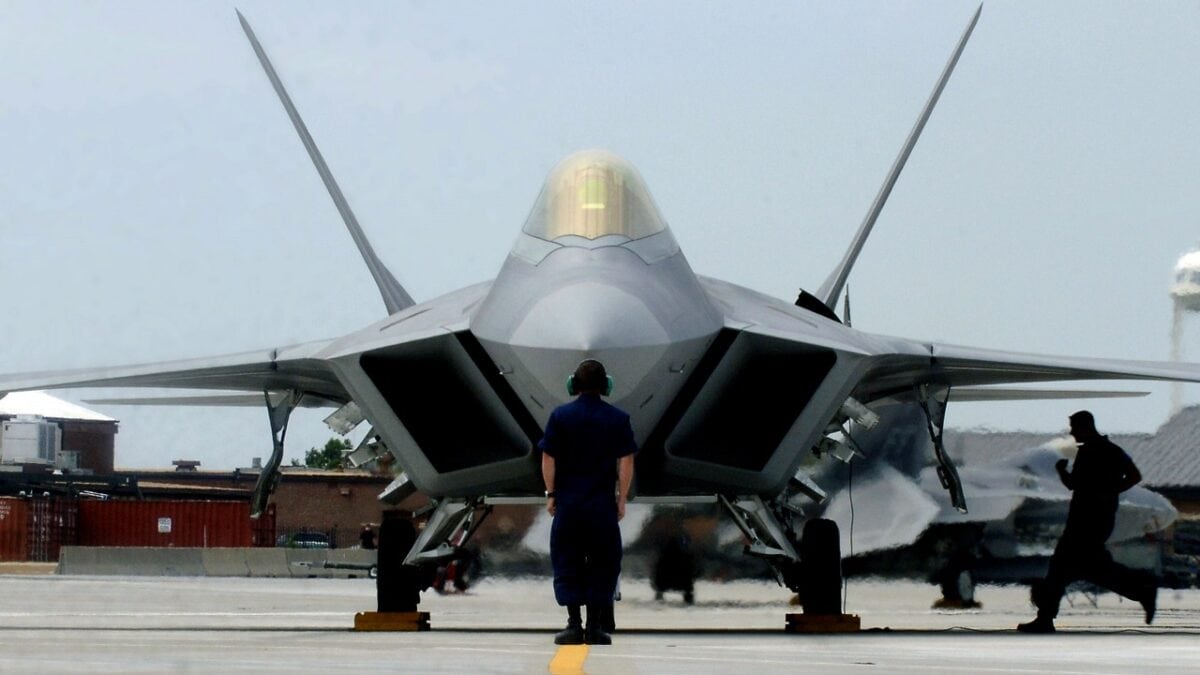
F-22 A Raptor Demonstration Team aircraft maintainers prepare to launch out Maj. Paul “Max” Moga, the first F-22A Raptor demonstration team pilot, July 13. (U.S. Air Force photo/Senior Airman Christopher L. Ingersoll)
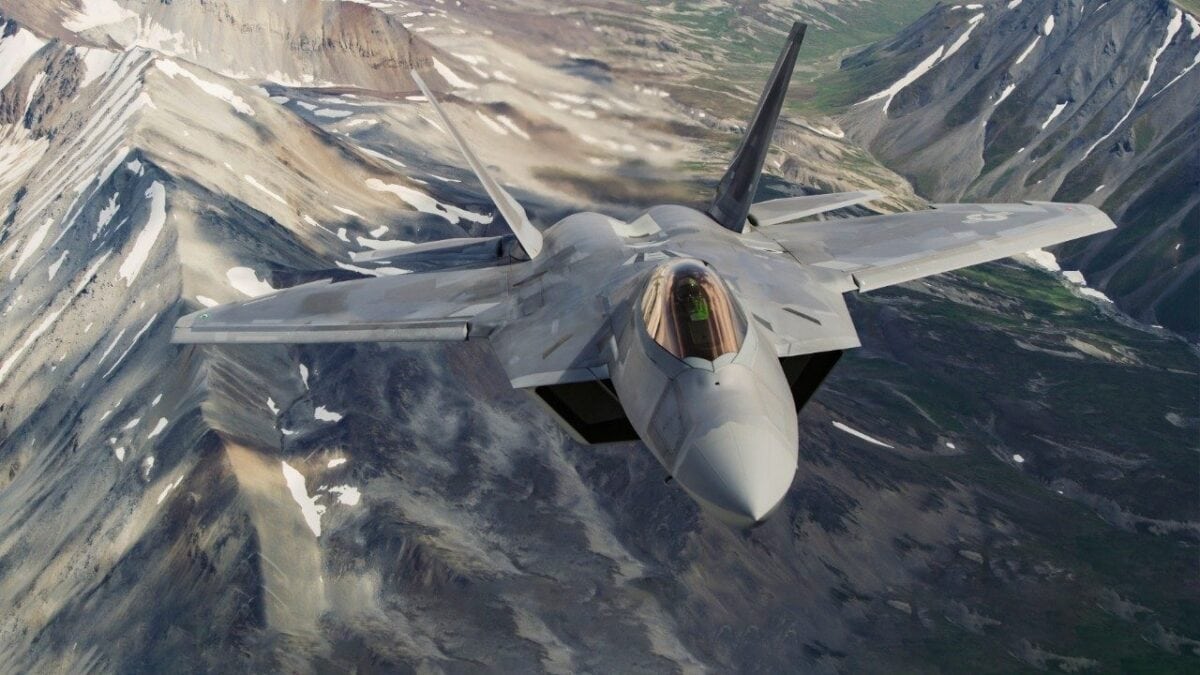
F-22 Raptor. Image Credit: Creative Commons.
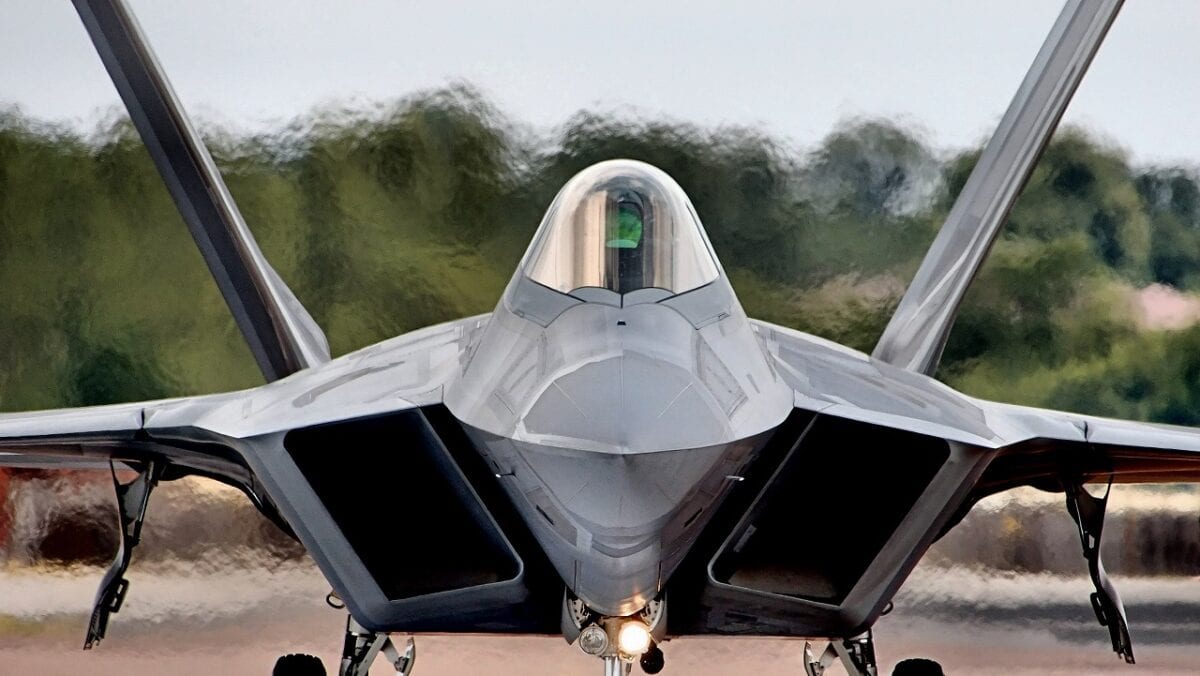
F-22 Raptor. Image Credit: Creative Commons.
MORE: World War III – Where Could It Start?
MORE: A U.S.-China War Over Taiwan Would Be Bloody
Christian D. Orr is a former Air Force officer, Federal law enforcement officer, and private military contractor (with assignments worked in Iraq, the United Arab Emirates, Kosovo, Japan, Germany, and the Pentagon). Chris holds a B.A. in International Relations from the University of Southern California (USC) and an M.A. in Intelligence Studies (concentration in Terrorism Studies) from American Military University (AMU). He has also been published in The Daily Torch and The Journal of Intelligence and Cyber Security.

